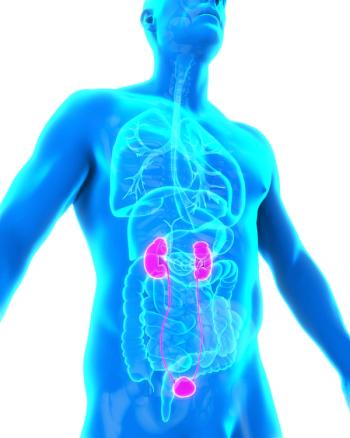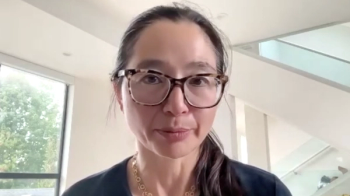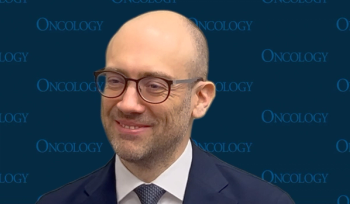
Data support the intravesical mitomycin solution’s role as an innovative option for those with recurrent, low-grade, intermediate-risk NMIBC.

Your AI-Trained Oncology Knowledge Connection!


Data support the intravesical mitomycin solution’s role as an innovative option for those with recurrent, low-grade, intermediate-risk NMIBC.

The safety profile of dato-DXd was consistent with previous clinical trials assessing the agent in breast cancer.

Casdatifan, administered at 100 mg once daily, achieved a confirmed ORR of 35% in patients with pretreated metastatic kidney cancer.

Patients with uveal melanoma who have tumors larger than 2 mm are candidates for brachytherapy plaque with vitrectomy and silicone oil.

A panel of oncology pharmacists discusses the role of lifileucel in metastatic melanoma and other considerations for using cellular therapy in solid tumors.

Evaluating RLT-based combinations, RLTs across genitourinary cancers, and in earlier lines of therapy are among the considerations for further research.

A study by the Blood and Marrow Transplant Clinical Trials Network found that a donor search prognosis strategy may move those with cancer to HCT faster.

Tara M. Graff, DO, MS, stated that combination therapy approaches may be the optimal route forward for advancing MZL care.

Grade 2 or higher genitourinary acute toxicity was observed in 27.3% of patients treated with 2 fractions of SBRT vs 29.2% of patients treated with 5.

Those with limited-stage small cell lung cancer who had elevated ProGRP levels at baseline had worse OS and PFS outcomes vs those with normalized levels.

“…if [there’s] a younger patient with MZL, I’m willing to risk a little extra toxicity to give them a longer-term remission,” said Tara M. Graff, DO, MS.

Twice-daily radiotherapy prolongs survival vs once-daily radiation among those with LS-SCLC, even with the incorporation of immunotherapy.

Pathologists should try to educate oncologists about the sensitivity and specificity of assays to help optimize care plans, said David Rimm, MD, PhD.

Subcutaneous mosunetuzumab achieved consistent rates of complete responses across various high-risk marginal zone lymphoma subgroups.

Treatment-related AEs with sunvozertinib were consistent with EGFR tyrosine kinase inhibitors in patients with NSCLC with EGFR exon 20 insertion mutations.

Beyond DNA-centric diagnostics, protein-based methods may play a role in accurately matching patients with the most effective therapies.

Biomarker research is needed to better ascertain patient benefit with tarlatamab among those with relapsed extensive-stage small cell lung cancer.

Biochemical markers and advanced imaging modalities play a critical role in monitoring patients undergoing RLT therapy for metastatic prostate cancer.

There will be an unmet need for therapy in patients with aggressive lymphomas who did not benefit from therapy with bispecifics, CAR-T, chemotherapy, and targeted therapy.

Data from the phase 3 IMforte trial support the FDA approval of maintenance lurbinectedin plus atezolizumab in extensive-stage small cell lung cancer.

Less lymphocyte depletion with twice-daily radiotherapy warrants further assessment to optimize the synergistic effect of radiotherapy and immunotherapy.

A real-world, retrospective analysis showed that CRS and ICANS occurred in 48% and 16% of patients with ES-SCLC who were treated with tarlatamab.

The decision is based on phase 3 DESTINY-Breast11 trial data, in which the investigational regimen displayed improved pCR vs SOC in this breast cancer population.

Combination therapy of ETX-636 plus fulvestrant is being administered to patients with HR–positive, HER2-negative breast cancer in a phase 1/2 trial.

David Rimm, MD, PhD, discussed how AI tools may help automate routine tasks for pathologists and predict genomic alterations from images.

The recent accelerated approval of tarlatamab marks a significant milestone in treating relapsed extensive-stage small cell lung cancer (ES-SCLC).

Data support the use of radioligand therapy in combination with androgen receptor pathway inhibitors to optimize prostate cancer outcomes.

The subcutaneous formulation of mosunetuzumab will require 17 cycles of therapy, without any maintenance, and can be done in outpatient settings.

D-VRd had a 72% chance of providing superior PFS outcomes vs isatuximab plus VRd in patients with transplant-ineligible NDMM.

Twice-daily thoracic radiotherapy appeared to confer less leukocyte and lymphocyte depletion compared with once-daily radiation in LS-SCLC.